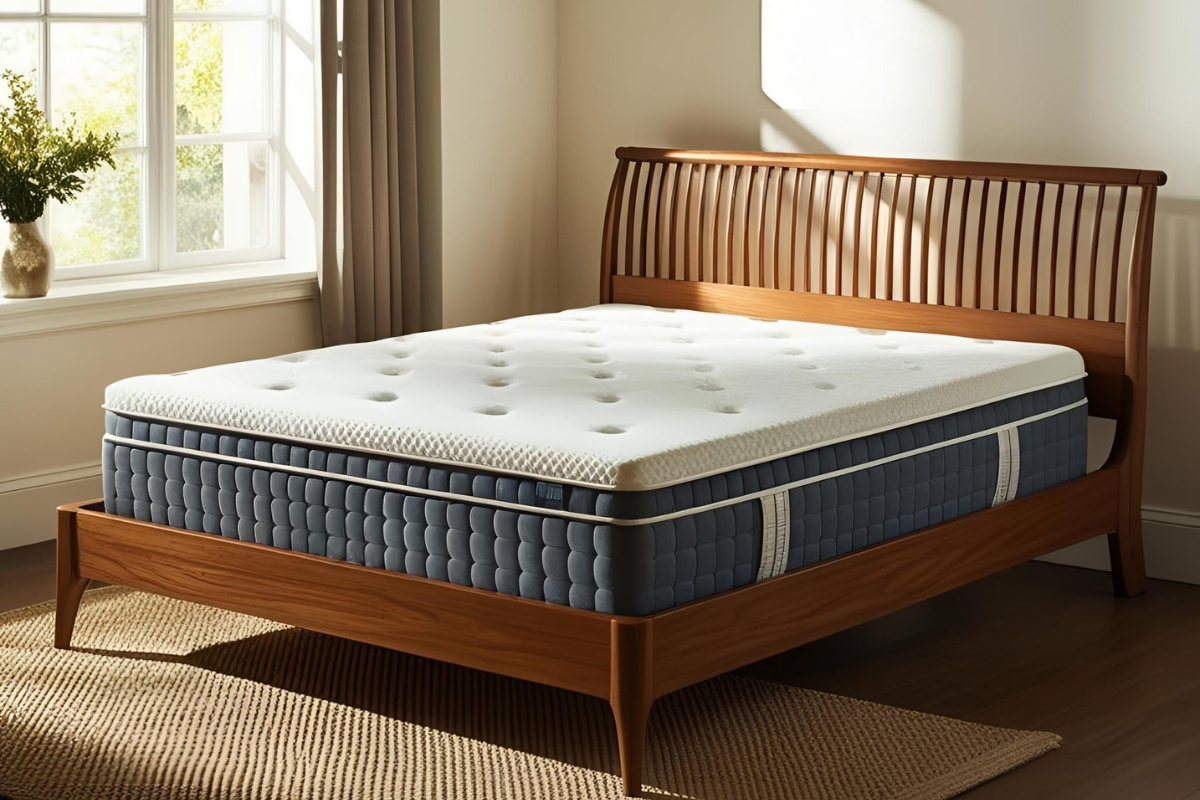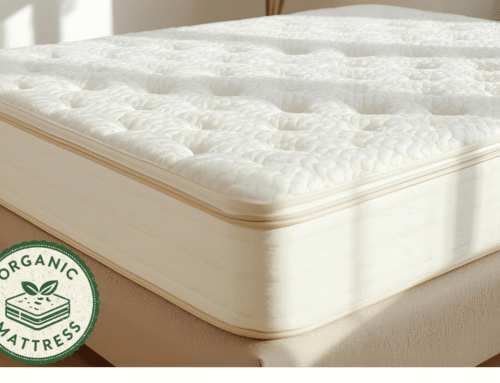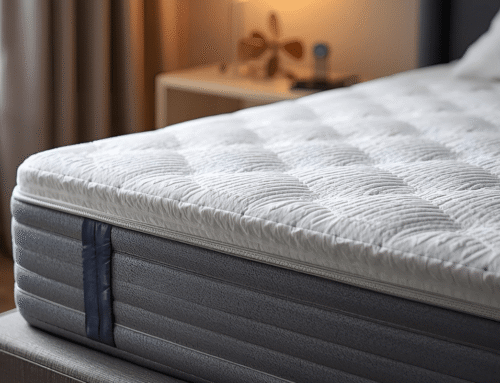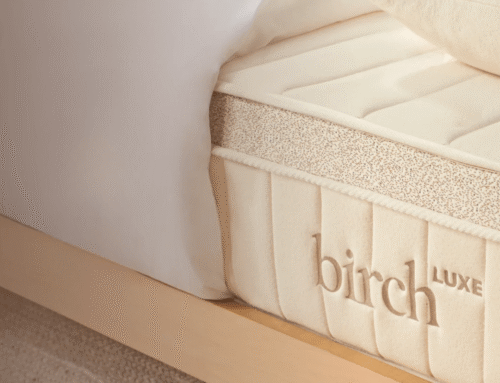You’ve probably heard that you should wait 48 hours before sleeping on a memory foam mattress. That advice mostly comes from manufacturers wanting the foam to fully expand and air out. But let’s be honest. Sometimes you don’t have a choice, and sleeping on it right away feels like the only option. Lying on it too soon won’t destroy the mattress, though you might notice it’s firmer or uneven in spots.
Some of us tried sleeping on ours the first night, and the corners stayed a little squished for a few days. Others didn’t notice much, especially if the room was warm enough to help the foam soften and rise faster.
So what’s actually happening on a memory foam mattress during those 48 hours? We’ll break down the expansion process, what you might feel if you skip the wait, and how to still get comfortable sleep, no matter how fast you unwrap it.
Before we get into all of that, it helps to understand what a memory foam mattress is and what a gel memory foam mattress offers in terms of cooling comfort, along with how much a memory foam mattress typically costs and what thickness is best for balanced support and pressure relief.
Also, it’s important to know how long memory foam mattresses last and how often to replace them to ensure you’re getting the best sleep experience over time.
Key Takeaways
- “Let it expand for 48 hours” simply means giving your memory foam mattress time to rise, breathe, and fully reshape after unboxing.
- Most foam mattresses reach about 90% of their final height within a few hours, but achieving full comfort and even support takes longer.
- Sleeping on the mattress right away usually won’t cause damage, but it may feel firmer, uneven, or slightly lopsided at first.
- Cooler rooms slow down the foam’s expansion, so placing the mattress in a warm, well-ventilated area helps speed up the process.
- If the mattress still looks flat after a few days, check for sagging or defects. Some thicker foams just need extra time to fully expand.

What Does “Let It Expand For 48 Hours” Actually Mean?
Some people wonder what “let it expand for 48 hours” really means after unboxing a memory foam mattress. These beds usually arrive rolled tight in plastic, so they can be delivered easily and carried through narrow spaces without much hassle. Once unpacked, the foam starts to rise and reshape itself. That 48-hour timeline is more of a guideline than a strict rule.
Most mattresses bounce back to about 90% of their full height within the first few hours. The rest of the wait is mostly for airing out, since some foams release a mild chemical smell during the first day or two. Some brands suggest 24 hours, others go up to 72, but the process is pretty similar across the board. Sleeping on it a little early usually doesn’t ruin the mattress, though the foam might still feel slightly uneven. The longer it’s left alone, the more balanced and comfortable the surface tends to feel.
Understanding what “let it expand for 48 hours” actually means, how long a memory foam mattress takes to expand, and how to compress a memory foam mattress again later all help explain why giving it time before sleeping on it matters.
Can You Sleep On Memory Foam Right Away?
Some people sleep on memory foam right after unboxing it, and honestly, it’s usually fine. The mattress might feel a little firmer or uneven, especially at the edges, but it still works. The foam just hasn’t had the full chance to open up and breathe yet.
Sleeping on it too soon might slow down the expansion, especially in colder rooms. Body heat and weight can affect how evenly the foam rises, so parts of the bed might stay compressed longer than expected. Comfort isn’t at its best until everything settles.
Manufacturers suggest waiting 24–72 hours, but that’s more about covering all the bases than avoiding real damage. A lot of people lie down on it the same day and don’t notice any major issues. Unless the room is freezing or the mattress is extra thick, it usually finishes expanding just fine. There are a few things to keep in mind, though. Sleeping on it too soon may slightly affect the expansion process and in some cases could potentially void the warranty, depending on the manufacturer’s terms.
What Are The Risks Of Sleeping On It Too Soon?
- Reduced Comfort: The mattress can feel firmer or a bit uneven during the first night. That’s often because the materials haven’t fully settled or softened yet. Some notice pressure points or stiffness that isn’t there after full expansion.
- Slower Expansion: Lying on it too soon can cause parts of the foam to stay compressed. This slows down the natural rise and affects the overall shape. It may take longer than expected for the mattress to feel balanced.
- Uneven Surface: It’s common to notice dips or raised areas after sleeping on it right away. The sections left untouched tend to expand faster. This results in a lopsided feel until everything catches up.
- Off-Gassing Exposure: The initial smell can be stronger during the first night. Without enough time to air out, that “new mattress” scent lingers. Some experience headaches or irritation from the trapped odor in a closed room.
If firmness is an issue or the mattress feels too soft, knowing how to make a memory foam mattress firmer and how to speed up memory foam expansion can help improve comfort while waiting for full expansion.

Why Does Memory Foam Take Time To Expand?
Memory foam reacts to its environment, so the temperature in the room affects how fast it expands. In warmer spaces, the foam becomes more pliable and rises more quickly. Cooler air tends to slow the process, which is why some people think the mattress is defective when it’s just adjusting. There’s a reason it can still feel dense or misshaped even after a full day. Those living in colder areas often notice the foam takes longer to feel comfortable. Giving it time in a room with steady warmth usually helps it take shape more evenly.
Opening the packaging doesn’t always mean the mattress is ready right away. Some people have waited over a day before it felt fully expanded or supportive enough to sleep on. Good airflow and a bit of heat tend to do the trick faster, especially for those eager to get comfortable.
Tips To Speed Up Memory Foam Expansion
Placing a memory foam mattress in a room that stays warm around 70°F or a little higher can support faster expansion. Cooler temperatures tend to slow down the process, especially right out of the box. Warm air helps soften the foam, which encourages it to settle into shape sooner. A fan nearby can support airflow, which helps the mattress release its factory smell quicker. That slight odor isn’t harmful, though it can linger without ventilation. Increasing air movement around the mattress often reduces both the scent and the wait time.
Light pressure using hands or walking gently across the surface helps relax any tightly packed foam. It isn’t about pushing hard, just nudging sections that feel slow to rise. Giving the mattress a few hours without sleeping on it also gives the foam more time to breathe and settle properly.
Light pressure using hands or walking gently across the surface helps relax any tightly packed foam. It isn’t about pushing hard, just nudging sections that feel slow to rise. Giving the mattress a few hours without sleeping on it also gives the foam more time to breathe and settle properly.

What If It Still Looks Flat After 48 Hours?
Some mattresses just need extra time to breathe and rise. Thicker memory foam, those over 10 inches, can take a little longer to expand, especially in colder rooms. It’s not always a quick process, and seeing a flat or uneven surface after 48 hours isn’t always a red flag.
Others have noticed full expansion happening closer to the third or even fifth day. That seems especially common during colder months or in rooms with limited airflow. A warmer space often helps the foam loosen up and stretch out the way it’s supposed to.
If moisture is a concern or the mattress feels damp, it’s important to know how to dry memory foam mattress and how to clean it to ensure proper expansion and hygiene.
But if it still looks compressed or has awkward lumps after a full week, that’s not something to ignore. At that point, reaching out to the brand’s support team feels like the right move. They might suggest a few steps or check if there’s something wrong with the product itself.
In some cases, the issue may not just be about delayed expansion but also about persistent indentations or sagging. That’s when it helps to look into how to fix dip in memory foam mattress and understand whether those uneven areas are temporary or signs of a defect.
Will Sleeping On It Too Early Void The Warranty?
Some brands recommend waiting 24 to 72 hours for a mattress to fully expand, but sleeping on it early doesn’t usually void the warranty. What matters more is how the mattress is handled during unboxing. If a knife slices the foam or a corner rips from dragging, that’s the kind of damage brands won’t cover.
Warranty claims often get denied due to mishandling, not because someone slept on it too soon. Instructions usually highlight what not to do, like bending the mattress or placing it on the wrong base. Following those steps matters more than the exact hour it was first used.
Some mattresses feel ready after a few hours, while others still look a bit compressed even the next day. Giving it time helps with airflow and comfort, but rushing that process won’t necessarily void the warranty. As long as setup guidelines are followed and no damage occurs, early use isn’t usually an issue.
How To Know If Your Mattress Is Fully Expanded
A mattress is usually fully expanded when its height matches the label within about half an inch. At this point, the surface should feel even without noticeable dips or raised lumps disrupting comfort. The corners will be properly filled out, showing no signs of deflation or sagging.
Lying down on a fully expanded mattress should reveal a consistent feel across the entire surface. There won’t be soft spots or uneven areas causing discomfort. The firmness and support should feel uniform from one edge to the other, indicating the mattress has settled properly.
Using a measuring tape is a simple way to check if the mattress has reached its intended height. Exact precision isn’t necessary since slight differences won’t affect how it performs. Overall, the mattress should look and feel ready for restful sleep once these signs are visible.
To maintain this even expansion and comfort, it’s also important to know how often you should rotate a memory foam mattress and how to know if your mattress is fully expanded, as proper rotation helps preserve its shape and support over time.

Do All Mattress Types Need Expansion Time?
Not all mattresses require time to expand after unpacking. Mattresses delivered in a box with memory foam, polyfoam, or hybrid foam layers generally need a few hours to regain their shape. On the other hand, traditional innerspring mattresses that arrive fully assembled and flat are ready to use right away without any wait.
Latex mattresses, especially those made from natural latex, tend to bounce back quickly after unpacking. They don’t usually need the full 48 hours that memory foam mattresses often require. Their natural resilience allows them to regain shape faster, making them more immediately comfortable.
The main factor is the type of materials inside the mattress. Foam layers tend to compress tightly for shipping and need time to decompress, while coil and latex constructions maintain their form more readily. This explains why some mattresses feel ready the moment they’re unboxed, and others benefit from a short break before sleeping.
Final Thoughts
Sleeping on a memory foam mattress before the recommended 48 hours usually doesn’t cause any lasting issues. The mattress might feel firmer or less even at first, but that typically improves as the foam adjusts. Early discomfort is normal and tends to fade after a day or two. The 48-hour wait mainly allows the foam to expand fully and off-gas any odors, helping it reach its intended softness and support. It’s similar to letting dough rest before baking. The mattress will perform better with time, though it’s still usable right away.
Ultimately, comfort depends more on how the mattress settles and how restful the sleep feels over time, not just on how long it’s been unboxed. Setting it up in a warm, ventilated space and shifting positions can ease the transition during those first nights.
After the initial expansion period, proper care becomes essential to prolong mattress life and comfort. Knowing how to move and store a memory foam mattress correctly and how to dispose of it responsibly when it’s time to replace it are important steps. Likewise, keeping it clean by effectively removing stains and urine helps maintain a fresh and healthy sleeping environment.







